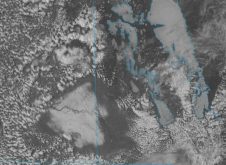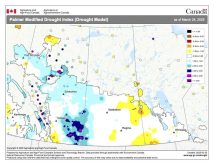Much-needed rain fell across Australia’s parched northeast grain belts during the weekend of Sept. 5-6, reducing the threat of crop loss that could have slashed the country’s 2009/10 wheat harvest by as much as five per cent.
The rain will significantly help ease moisture stress in crops across northern New South States and southern Queesland states, Luke Mathews, an agricultural commodity strategist at Commonwealth Bank of Australia, said last Monday.
“One to one-and-a-half inches (of rain) has helped stressed crops so that has certainly improved the situation but we’re not out of the woods yet,” Mathews told Reuters.
Read Also

Thunderstorms and straight-line winds
Weather columnist Daniel Bezte discusses the strength of straight-line winds during a thunderstorm and the damage they can cause.
The northeast region could account for 10-15 million tonnes of the 2009/10 wheat harvest, currently estimated to be between 21 million and 23.5 million tonnes, the best for four seasons.
“Exactly how much is at risk will chop and change but I’m still looking at a crop of over 22 million tonnes,” said Mathews.
But the rain came too late to save some crops in Queensland. “It’s generally been beneficial but some growers in the north have started
to feed grain to cattle,” said Jaco van der Merwe, a grain trader with Knight Commodities, based in Queensland.
More spring rain will be needed over most of Australia’s grain-growing regions, but Mathews said outside the northeast most crops were in good condition, suggesting a big harvest.
A bountiful harvest would add to pressure on Australian wheat prices, already suffering from weak domestic demand, a strong Australian dollar and low international wheat prices.
“Carryover stocks from the last harvest are likely to be bigger-than-expected so a big harvest won’t help,” said Mathews.
Stocks could increase by nearly two million tonnes, compared with a year ago, to close to four million tonnes ahead of the next harvest moving into full swing in October, he said.














